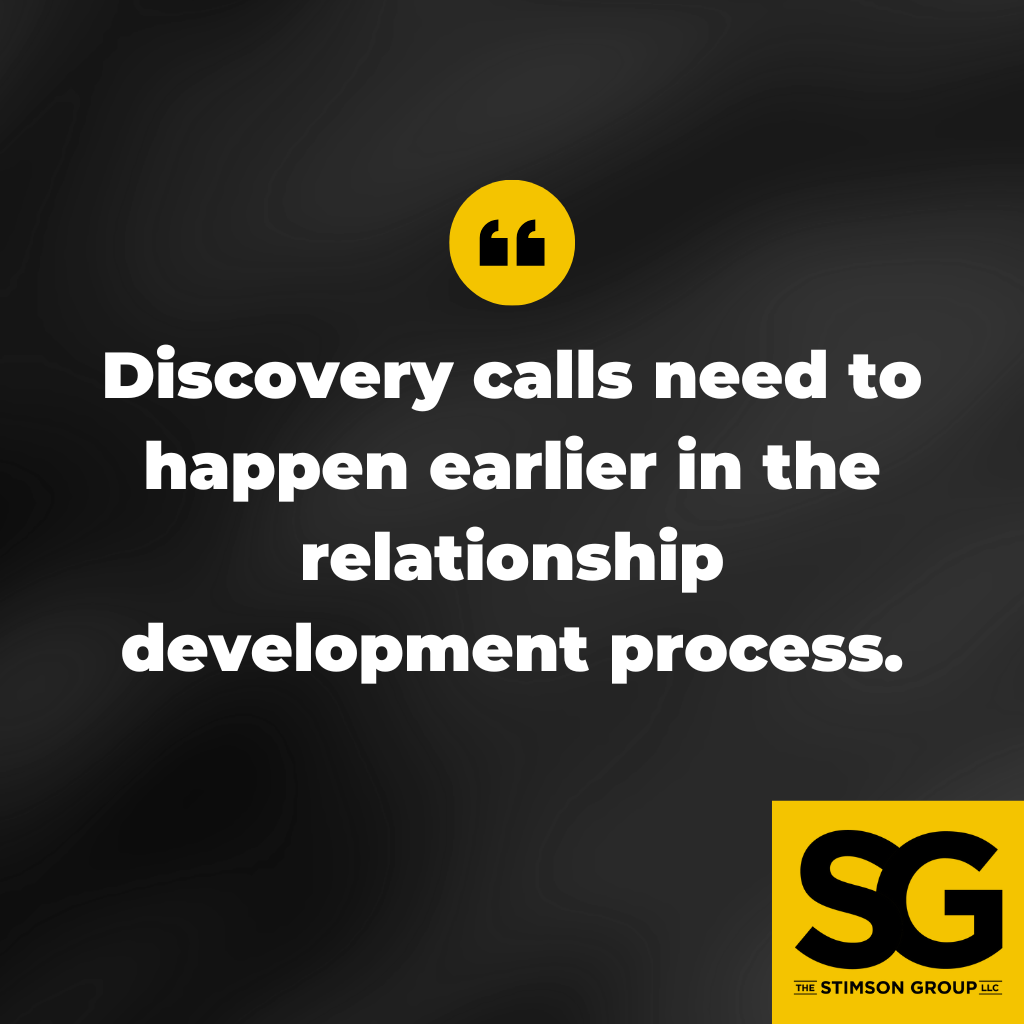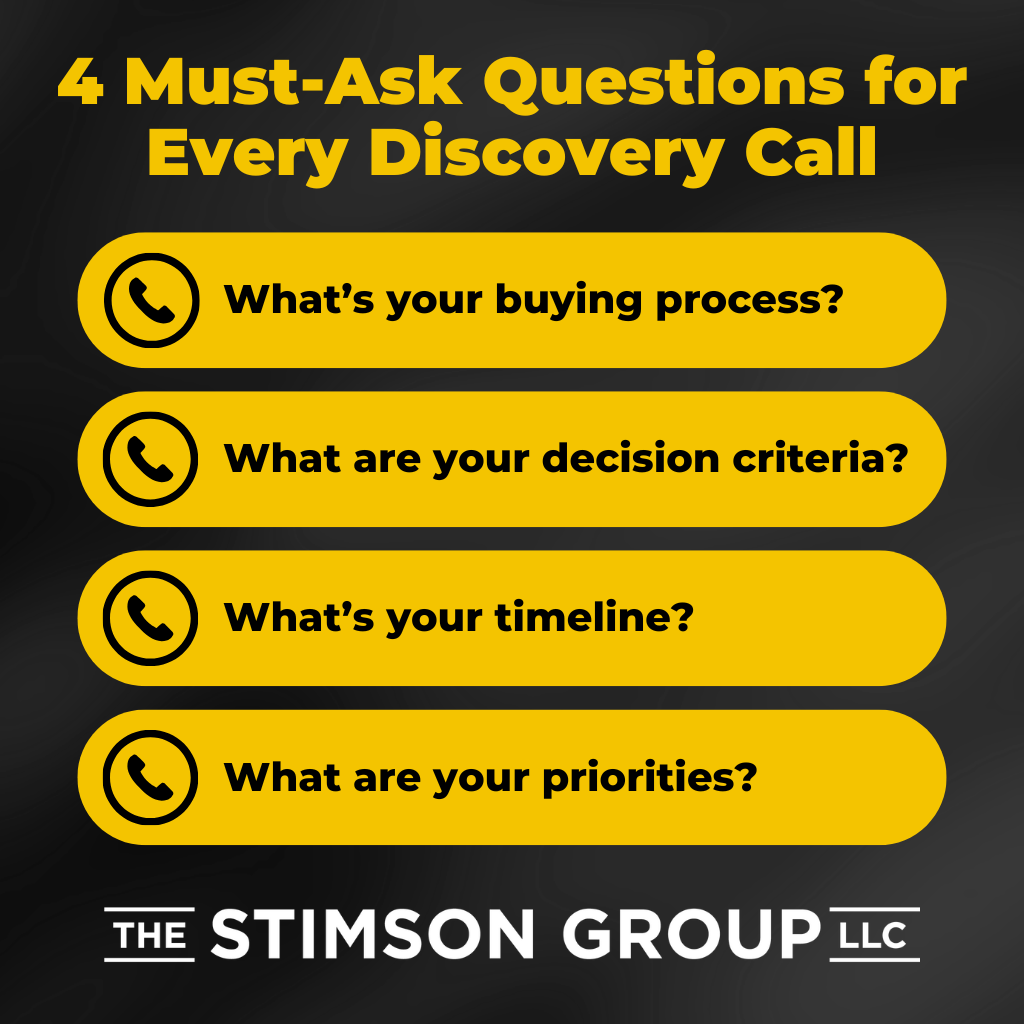
Listen instead on your Monday Morning Drive:
The term “discovery call” keeps appearing in sales processes across our industry. This is good progress. But many of you use discovery calls improperly or at the wrong time.
Let’s fix that.
Realizing Your Sales Funnel’s Potential
Picture your sales funnel. It’s big at the top, small at the bottom. You’ve got leads, prospects, opportunities, and sold business.
Somewhere in there are clients. Sometimes converting an opportunity results in a client; sometimes it results in a customer.
A customer completes a project and goes back to the top of the funnel. A client stays in the funnel because, as a client, they’ll always call you first.
Why Most Discovery Calls Fail
You might use discovery calls to ask customers questions about their project. That’s an understandable impulse, but discovery calls need to happen earlier in the relationship development process.
Here’s how it works:
- Inquiries lead to qualification
- Qualification leads to prospects
- Prospects require discovery

Your First Call Creates Mutual Qualification
When a lead reaches out, that first conversation isn’t discovery. It’s mutual qualification: “Hi, who are you? What do you do?” “I’m X. I do Y. Who are you? What do you do?”
A qualified lead becomes a prospect. An unqualified lead remains a lead. They might become a prospect later, or they might refer you to someone else.
Keep marketing to them either way.
Powerful Discovery Without a Project
If your qualification call goes well and the lead is a good prospect, your next step is a discovery call.
“But they don’t have a project yet!” you say.
Exactly. And if they do have a project, your next step is also a discovery call, though they’re two different discovery calls.
Discovery for prospects without projects drives the next step. Very often, that next step is a pitch. The discovery drives your pitch.
Connect Through Prospect Discovery
In this discovery call, you learn about a prospect’s needs and help them understand what you do. You’re looking for connections.
You might be mismatched. They may want a full-service company, but you respond to RFPs and need educated buyers. Great. Refer them to someone who can make them a better buyer.
Explain why you’re not a good fit for that prospect right now. Sometimes this causes them to correct themselves: “I didn’t realize that. That sounds more like what I want.”
You generally have one opportunity to reframe a prospect’s needs to fit what you do. If they have that “aha” moment, schedule a pitch.
Failure isn’t possible here. If you find a bad fit and dismiss it, you won. If you find a good fit and move forward properly, you also won.

Turn RFPs Into Opportunities
Now let’s talk about the type of discovery call you’re more familiar with: the one that comes from an opportunity.
A prospect (whether recurring customer or referral) hits you with an RFP. What do you do? Have a discovery call.
But this call isn’t to unpack the RFP. It’s to understand what the prospect is trying to accomplish.
Ask these basic questions:
- What’s your buying process?
- What are your decision criteria?
- What’s your timeline?
- What are your priorities?
If they can’t share this information, why continue talking? These are fundamental.
Create Strategic Next Steps
After understanding their needs, schedule another call to offer solutions. This is when you can address the RFP:
“We’ve looked at your RFP. We understand what you’re trying to accomplish. Here’s what we recommend. Here’s where it matches your RFP. Here’s what’s missing. Here’s what you don’t need.”
You might offer three approaches, then narrow down what goes into your proposal.
Sometimes, solutions aren’t the right next step. You might need ideation first — a higher-level view of their job. Ideation drives creative design, which drives a project pitch.
The third option is reframing. Help the buyer reframe their needs in achievable terms, then connect the outcomes they want to this reframe.
For clients, reframing might sound like, “You’re looking at us too narrowly. Here’s what we actually do. Here’s how to use us effectively.”
Assign the Right People to Each Call
When you convert a lead without a project into a prospect, the discovery call works best if conducted by business development or a strategic salesperson. Their job is to qualify the prospect, understand their needs, and set up the next call.
When prospects do have a project, discovery requires business development, an executive producer, and/or sales. You need a bigger team to design your pitch.
The pitch to that prospect is about alignment. How do we match their needs with what we do?
This isn’t about unpacking a project or discussing how many cameras you need. You just need to explain what you do for customers like them.
Bring Your Best Minds to Project Discovery
For actual project discovery, gather the best minds in your company to meet with the buyer. Your top account executive, creative producer, designer, and planning representative are all appropriate players.
This doesn’t need to be the team that’ll work on the project. You just need to sell your expert team’s advice and recommendations.
Your Most Powerful Business Development Tool
If you’re trying to develop long-term business with recurring prospects that become opportunities or permanent clients, you need to understand the different types of discovery meetings. They’re your most powerful tool in developing ideal prospects and ideal opportunities, which lead to ideal clients.
It’s all about process: taking the smallest steps possible for the greatest return.





Leave a Reply